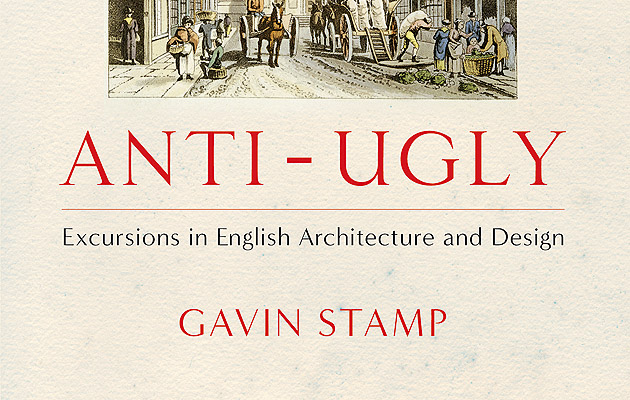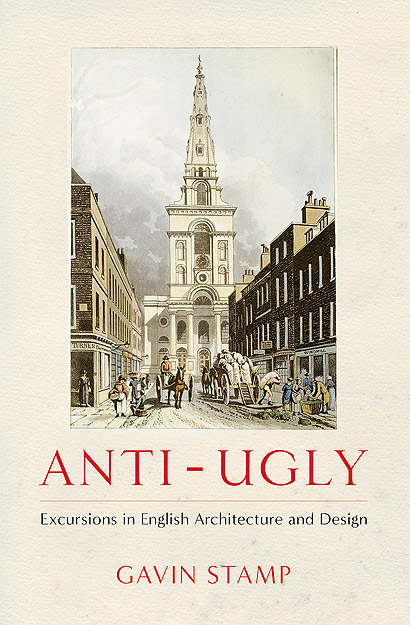|
|
||
|
The architectural historian may be closely identified with conservation, but his essays reveal a remarkably flexible outlook, says Will Wiles “Nostalgia and progress are not necessarily contradictory,” writes Gavin Stamp at the head of an entertaining essay telling the story of the 13th Earl of Eglington’s “grand aristocratic tournament”, held in 1838, the year of the opening of the world’s first inter-city railway, Robert Stephenson’s London & Birmingham. Spectators could travel by train and paddle steamer – high technology both – and then watch armour-plated aristos trotting about in the mud, pretending to be Sir Lancelot. Not necessarily contradictory, although Eglinton was a High Tory and certainly incompatible with progress. This is Stamp’s lesson throughout Anti-Ugly, an anthology of essays written for the art magazine Apollo: to draw attention to what might be summarised as atemporality. Rather than having neat beginnings and ends and lines of succession, styles and tastes in architecture have unexpected precedents, go on much longer than you might expect, and sometimes apparently disappear only to re-erupt at inconvenient moments. Little is really wholly new, and the old is more novel than you think. Stamp is an architectural historian and critic and one of our leading preservationists: a prominent member of the Victorian Society and a former chairman of the Twentieth Century Society, which he helped found. As a writer he is best known, to those who know, for his regular jeremiads in Private Eye, written under the pseudonym “Piloti”, in which he highlights historic buildings at risk and bemoans their lacklustre replacements. In 2007 he published Britain’s Lost Cities, a powerful elegy for the destruction by war and redevelopment of so much of Britain’s urban fabric. Learned vilification is a manner that appears to come easily to Stamp, perhaps thanks to decades of practice. Anti-Ugly, like Britain’s Lost Cities, is full of surprises and even-handedness. Unlike Britain’s Lost Cities and the Piloti columns, which are official police business, Anti Ugly is full of Stamp’s enthusiasms and pleasures. The stamp of approval, if you will. There are familiar conservationist themes, such as the ritual worship of St Pancras and garment-rending at the loss of the Euston Arch. He can be stuffy, for instance when discussing Trafalgar Square’s “Fourth Plinth”. Every now and then his dry, senior common room style risks being a shade more Pooterish than donnish (“Now I am all in favour of trees … “). But, given enviable freedom by his editors, Stamp casts his net wide and reels it in full of diverting subjects. These include the lost surrealist interiors of Monkton House, a defence of “mock-tudor” surburban architecture, and the fascinating and forgotten Robert Byron. The various G Scotts, Hawksmoor and Edwin Lutyens emerge as particular favourites. The latter takes lead role, with Raymond Erith, in Stamp’s efforts to present neoclassicism as a vital, fresh and modern alternative path British architecture could have chosen rather than modernism. But modernism is not thoughtlessly dismissed, and neither is classicism given blanket approval. Soane gets a fascinating and exacting dissection. No living architect comes in for stiffer drubbing than the “pedantic and unimaginative” Quinlan Terry, a “victim of that perennial curse of English architecture: Palladianism”. You are reading Icon, so your taste, like mine, is probably towards the modern – you will find yourself, like me, often disagreeing with Stamp. His intellectual suppleness and honesty – which is to say, his willingness to change his mind – makes him an important voice in British architecture. Much of Anti-Ugly is a portrait of a hugely intelligent man revising his opinions and its real strength is to leave the reader aspiring to Stamp’s virtues of curiosity and fearless independence.
Anti-Ugly: Excursions in English Architecture and Design by Gavin Stamp, Aurum Press, &16.99 |
Words Will Wiles |
|
|
||



















